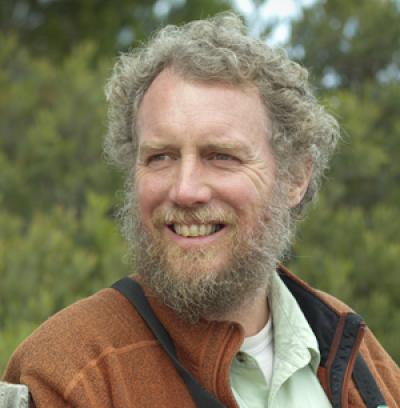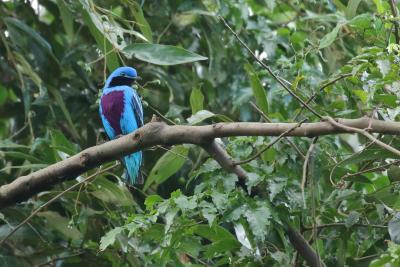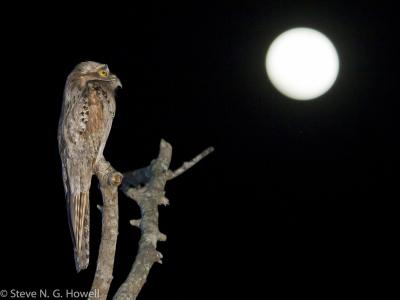Note: The information presented below has been extracted from our formal General Information for this tour. It covers topics we feel potential registrants may wish to consider before booking space. The complete General Information for this tour will be sent to all tour registrants and of course supplemental information, if needed, is available from the WINGS office.
Booking your place on our Santiago to Los Angeles cruise should be done in two steps:
1. Participants should book on-board birding time and the seven land excursions directly with WINGS. Please do this first to insure there’s space. Details follow.
2. Participants should book their ship berth directly with Princess Cruises. Details follow.
——————————————-
BOOKING WITH WINGS: WINGS space should be booked through the WINGS on-line booking system or directly through the WINGS office. The all-inclusive per person cost for the seven days of land arrangements plus Fabrice’s on-board services is listed on thetour page. Our standard 4% discount applies to invoice balance if payment is by cash, check or wire. Applicants will be sent registration and release forms, deposit, payment and cancellation schedules and related information. The deposit for this tour’s WINGS services is $350/per person ($200 non-refundable) with the balance of payments due no later than 4 months prior to departure. Please wait for confirmation of space from WINGS before booking your berth with Princess. Note: You will have a seven-day window from the date of your WINGS booking to cancel without a WINGS penalty should Princess not have the berth accommodation you require.
——————————————-
RESERVING YOUR CABIN WITH PRINCESS CRUISES: Your berth on this cruise should be booked over the phone with Princess Cruises to make sure your booking is added to our group number (see details below). All cabins will work equally well with the planned activities. Price depends largely on cabin class with cabin base prices beginning at about $1800 (including Port Fees). Note that deposits and payment to Princess are completely refundable if cancelled before their first penalty date, which is about 3 months out from the tour.
Note: Because we’re a group, all bookings from North America should go through our group organizer with Princess Cruises, Melissa Mesker at 1-800-901-1172 ext. 21678 or mmesker@princesscruises.com. Her hours are 7:00 am-3:45 pm Pacific Time, Monday – Friday. It’s best to book your cabin through the number above and not through a standard travel agency or website such as Kayak, Expedia, or Travelocity (or over the Princess website). If you get her voicemail leave a message with the following information (or dial 0 during the message for one of her support team):
1. I’m booking into a group.
2. Our agent is Melissa Mesker.
a. 21 March-8 April 2025
1. Group Name: WINGS SALA 2025
2. Our group TN1
3. Our cruise number or voyage code is H507
4. Ship: Sapphire Princess
Choosing a cabin on the Sapphire Princess (Open Bow): The closest interior (non-view) cabins to the birding spot are on Deck 5, in the front of the ship, between the elevator and the laundry. If you are worried about the movement of the ship then more stable interior cabins are on Deck 5 near the Art Gallery, though these are also near the Casino and may be noisy. There are also interior cabins mid-ship on Deck 10.
If you prefer a more expensive cabin with an ocean view the closest cabins to the birding location are on Deck 8, in the bow of the ship. Cabins on deck 8 mid-ship are also close to the birding location and more stable than in the front.
Additional information to have at hand before calling to make your booking:
• Your name(s) as they appear on your passports (first, middle and last)
• Your date(s) of birth
• Captain’s Circle Member numbers (for past Princess Cruises passengers) for all persons who may have them
• Phone numbers, mailing addresses, and email addresses for all persons who do not have Captain’s Circle member numbers
• Preferred bed configuration (queen vs. twin) for all staterooms – please note for cabins of 3 or more bed configuration may not allow a queen bed. Princess can provide specific bedding configuration details for each cabin as needed.
• Family stateroom configurations planned in advance (i.e., for families exceeding 4 persons; maximum stateroom occupancy is 4) or ask about Family Suite accommodations for up to 8 passengers.
• Dining selections (early, first, or late Traditional Dining, or Anytime dining) WINGS Note: Select “Anytime” dining.
• Any Special Requirements, including but not limited to: special dietary requests like food allergies and dietary restrictions (i.e., vegetarian, kosher, vegan, etc), or medical considerations.
• Any birthdays, anniversaries or other special occasions that you would like celebrated while onboard
SUPPLEMENTAL NOTES
1. Our cruise is limited to 14 birders due to the difficulty in showing seabirds to a larger group and to limits with certain of our land based services. Non-birding companions are permitted, and no WINGS deposit or payment is required, but such companions should not expect to join the daytime birding activities on board ship or on land. Non-birding companions should of course book their cruise berth with Princess. If you’re planning to travel with a non-birding companion, we suggest you contact the WINGS office for a review of the limitations of such a booking.
2. Shortly after you’ve booked your berth, you’ll get an e-mail booking confirmation from Princess. Please forward a copy of that e-mail to the WINGS office and we’ll make sure all your data is transferred to our group.
3. Cruise Itinerary: Princess tells us that there is no direct web link to our cruise. To view the itinerary one has to enter the main website, http://www.princess.com/ , and go through the “Plan a Cruise” link. Select “South America” as a destination, the “Sapphire Princess” as a vessel, and “March 2023 or 2024” as a date. Click on “View Details” to see cabin prices, itinerary, and other details. Note: even though it’s possible to book the cruise through the website, we recommend doing so over the phone. On the website there’s no place to add your booking to our group block and you’ll have to call them anyway.
4. Anyone who is unable to make a booking through Princess can request assistance from the WINGS office.
ENTERING CHILE: A valid passport is required. A visa is not required for U.S. citizens. Citizens of other countries may need a visa, and should check with the Chilean embassy or consulate. If required by the embassy or visa-granting entity, WINGS can provide a letter for you to use regarding your participation in the tour.
CHILE RECIPROCITY FEES: Currently citizens of the United States, U.K., and Canada do not have to pay the entry (“reciprocity”) fee. As of 2020, Australians are not required to pay reciprocity fee anymore but are required to obtain an e-visa to enter Chile.
TRANSFER BETWEEN AIRPORT AND HARBOR: If you participate in the pre-tour extension in Chile, you will travel with the group to the ship and board together. If you are starting the cruise directly, your transfer is best arranged through Princess Cruises, who run regular shuttle buses from the Santiago airport to the ship and take care of your luggage (highly recommended for those not doing the extension).
ENTERING PERU, ECUADOR, COSTA RICA, and MEXICO: U.S. citizens need a passport valid for at least six months after the date the tour ends. Citizens of other countries may need a visa to enter one or several of these countries. Please refer to your cruise information from Princess for country entry details.
COUNTRY INFORMATION: You can review the U.S. Department of State Country Specific Travel Information here: https://travel.state.gov/content/travel.html. Review foreign travel advice from the UK government here: https://www.gov.uk/foreign-travel-advice and travel advice and advisories from the Government of Canada here: https://travel.gc.ca/travelling/advisories.
HEALTH: The most current information about travelers’ health recommendations can be found on the Centers for Disease Control’s Travel Health website at http://wwwnc.cdc.gov/travel/destinations/list. Specific vaccinations and proof thereof may be required to enter the country.For entry and exit information please visit the U.S. State Department’s website at http://travel.state.gov/travel/. We strongly recommend contacting your doctor well in advance of your tour’s departure as some medications must be initiated weeks before the period of possible exposure.
There are no major health risks during most of our cruise, and no cholera, typhoid or yellow fever risk during our land excursions.
The CDC mentions a risk for malaria in some provinces of Costa Rica and Nicaragua but the risk of getting malaria at the places we visit during our land excursion is very low. Furthermore, the mosquito which transmits malaria is mostly active at dawn and dusk when we will still be onboard ship, lowering even more the low risk of getting malaria.
A tetanus booster is always a good idea before traveling. You should also be sure that your routine vaccinations are up to date for measles/mumps/rubella (MMR) vaccine, diphtheria/pertussis/tetanus (DPT) vaccine, etc. As some of these inoculations cannot be given concurrently please contact your doctor well in advance of the tour to start your course of treatment.
Water supplies are good, but bottled water is also widely available. Immodium or Pepto Bismol in tablet form can be recommended as the best treatment for occasional traveler’s diarrhea. For mosquitoes, which we may occasionally encounter, we recommend using insect repellents with a high concentration of DEET. However, care must be taken to avoid getting the DEET repellent on optical equipment, as DEET dissolves rubber and plastic and can damage coated lenses. Camping supply stores and outfitters carry some reasonably effective alternatives that contain natural products and aren’t corrosive.
Since it may be impossible to obtain personal medications while on tour, please bring what you will need.
SMOKING: Smoking is prohibited in the vehicles or when the group is gathered for meals, checklists, etc. The ship is generally non-smoking, with areas provided for smokers. If you smoke in the field, do so well away and downwind from the group. If any location where the group is gathered has a stricter policy than the WINGS policy, that stricter policy will prevail.
ALTITUDE: On the land excursions organized during the cruise we won’t be at elevations higher than about 1,500 feet, so altitude sickness will not be a concern during the main tour.
PACE OF THE TOUR: The tour starts after meeting on the Sapphire Princess cruise ship in the San Antonio harbor. The tour is divided in two different types of birding: the sailing days and the land excursions days. The location of the group for birding while on board the ship will depend on the weather conditions and time of day. This will be explained by your leaders during the introductory meeting. When sailing, the leaders will indicate where and when they will be birding, and you can join them for as long as you want: for just a couple of hours if you also wish to enjoy some activities offered by the cruise line, or for the full day if you don’t want to miss any seabirding action.
Due to the type of birding, being out at the crack of dawn is not as important as on hot tropical land tours (although there is usually more seabird activity early in the morning). During the sailing days, the leaders are usually on deck birding from around dawn to about 6:00 p.m. and you can join them when and for as long as you want. There may of course be special areas during which we’ll want to be on deck regardless of the time. The leaders will brief you on these well in advance.
For the land excursions, the whole group will meet half an hour before the official landing time to be able to leave the ship quickly as a group and have as much time as possible on our land excursions. We usually leave just after breakfast and depart for a day of birding and/or travel with box lunches and a supply of snacks (fruit, cookies, etc.) and drinks to keep us going. Most of the walking is on level to gently sloping terrain, and there are no long hikes; but it can be hot. Being in reasonable shape for hiking a mile or two in the heat and humidity is important, although there are also opportunities to sit out walks in the vehicles.
Note: on occasion weather (or other uncontrollable circumstances) may force the last-minute cancellation of a land excursion. In most of these cases a refund won’t be available. This happens rarely but is worth mentioning.
CURRENCY: During the land excursions, there are usually stands with people selling handicrafts or wine before re-boarding the ship, and payment can be made in US dollars. It’s a good idea to bring smaller US$ bills (10s, 5s, and 1s, rather than 20s and 50s).
CLIMATE: Expect tropical climate during most of the trip, so temperature will be quite warm (expect temperatures at mid-day between 75 and 85 degrees F) during each of our landings. The difference will mostly be the humidity: dry in Chile, Ecuador, Peru, and Mexico, and hot and humid in Costa Rica.
At sea, the temperature will be cooler, especially off Chile and Peru, with air temperature closer to 65 degrees F, and even more so the last couple of days off Baja California, with temperatures in the 50s, which will feel decidedly cold relative to the rest of the trip—long underwear and gloves will not seem out of place if you are out on deck for long periods.
ACCOMMODATIONS: During the cruise, you can choose between several levels of accommodations, see http://www.princess.com/learn/ships/np/staterooms/index.jsp to learn more.
FOOD: An impressive variety of food is served on board ship. Food is available 24 hours a day, and there is no obligation to eat all meals with the group. For lunch, the easiest option is usually to eat at one of the buffets or have a pizza or sandwich. The buffet option is available for dinner as well, though some participants may opt to have a more formal dining experience at one of the ship’s restaurants. Each day the leader will let you know where and when the group will meet for the daily list round-up.
On on-shore days during the cruise, lunches will range from make-your-own sandwich fare to bag lunches provided by the ground agent to at least one sit-down restaurant lunch.
WINGS tours are all-inclusive, and no refunds can be issued for any tour meals participants choose to skip. While our restaurants and ground agents make every effort to ensure the comfort of all participants, we cannot guarantee that all food allergies can be accommodated at every destination. Many restaurants offer set menus and are unable to accommodate all special requests within a group. Thus, participants with significant food allergies or special dietary needs should bring appropriate foods with them for those times when their needs cannot, regretfully, be accommodated. Our tours are carefully scheduled to ensure the best possible birding experience. Mealtimes generally cannot be adjusted; any participant who needs to eat earlier or later than the times scheduled for the group should bring supplemental food with them. Please contact the WINGS office if you have any questions.
DRINKS ON BOARD: Princess offers at no charge water, iced tea, or lemonade. When on board, WINGS doesn’t cover other drinks. Therefore, any other drinks such soft drinks, mineral water, or any kind of alcoholic beverage will be charged to you. Luggage is scanned every time we go on board, and only one bottle of wine, for the entire cruise, is accepted per passenger. If you bring more than one bottle (or another bottle at another landing) Princess will charge you a corkage fee (approximately 15 US$ per bottle).
TRANSPORTATION: Most of our land transportation will be in 20-seater coaches or in two smaller minivans. We will sometimes be on dusty gravel roads.
Last updated Apr 16, 2024








































































